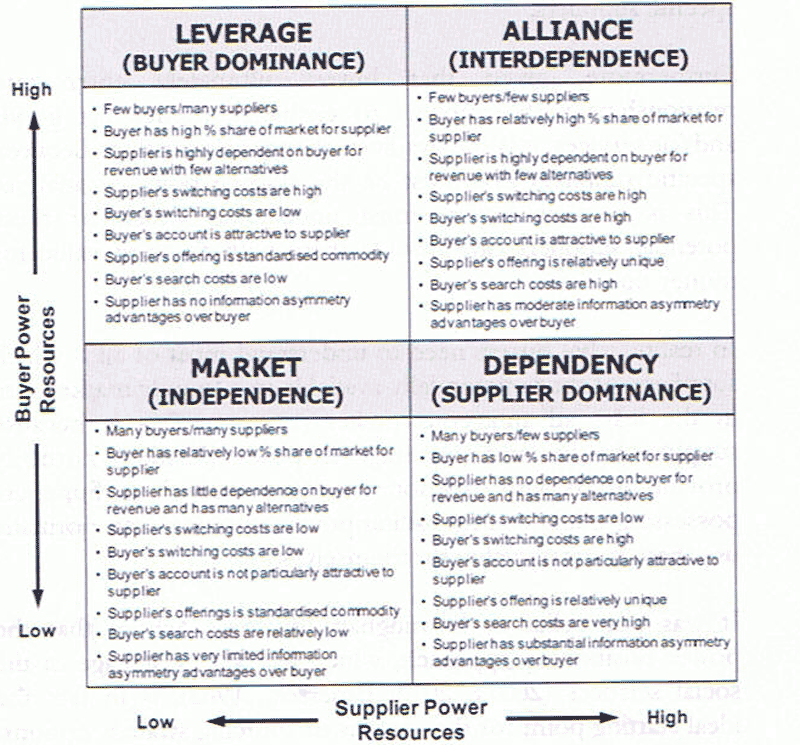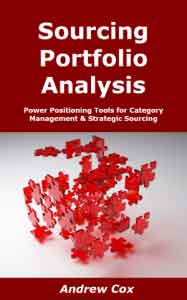"In reality, what buyers need to understand most of all is which suppliers, of those potentially available in the supply market, are in the least advantage power position," Cox argues.
Further, this analysis of relative power positions becomes the starting point for deciding on the optimal sourcing strategies, Cox adds.
All that leads - of course - to a four box matrix approach for positioning those relationships. And again, this analysis is at an individual buyer-supplier relationship, not the market as a whole. Within a given product market, the positioning will often differ based on individual buyers and suppliers.
That four box matrix is illustrated below. The X-axis relates to supplier power sources, the Y-axis characterizes buyer power sources, in the common high-low positioning scheme.

That leads to four definable quadrants:
Leverage: This is the buyer-dominant power position in which the buyer has all or most of the power resources to leveraged improved value for money from the supplier, which possesses few countervailing power resources.
Alliance: This is the interdependence power position, in which both buyer and seller have many power resources that countervail those of the other party in the exchange relationship. Value will normally be shared.
Market: This is the independence power position in which the buyer and seller have few power resources with which to leverage the other. Market conditions and the relative competence of both parties in bidding and negotiation will normally determine the share of value in these relationships.
 Dependency: This is the supplier dominant power position, in which the supplier has all or most of the power resources to determine value for money outcomes and retain the lion's share of the value from the buyer. Dependency: This is the supplier dominant power position, in which the supplier has all or most of the power resources to determine value for money outcomes and retain the lion's share of the value from the buyer.
So, rather than determining sourcing strategies based on the characteristics of the general supply market, companies need to determine those strategies based on the characteristics of a particular buyer-seller dynamic.
While the graphic above provides key characteristics of each quadrant, Cox and IIAPS have actually developed 165 attributes to determine relative power scenarios. We don't quite room for all of them here.
What's more, Cox says, this analysis needs to be dynamic not static - in other words, buyers should want to move relationships for a given product/commodity to a position in which they have the advantage, not suppliers.
Relatedly, Cox takes some shots at supplier collaboration, which he says is often cited as the ideal in a "win-win" model, when in reality if the buyer has the power position, it should strive to obtain a greater share of the total value.
That's all we'll cover here on this interesting but very deep book. More soon, including how to translate that power analysis into sourcing strategies.
Do you know Brad Holcomb? Any thoughts on his career? Let us know your thoughts at the Feedback button (email) or section (web form) below.

|